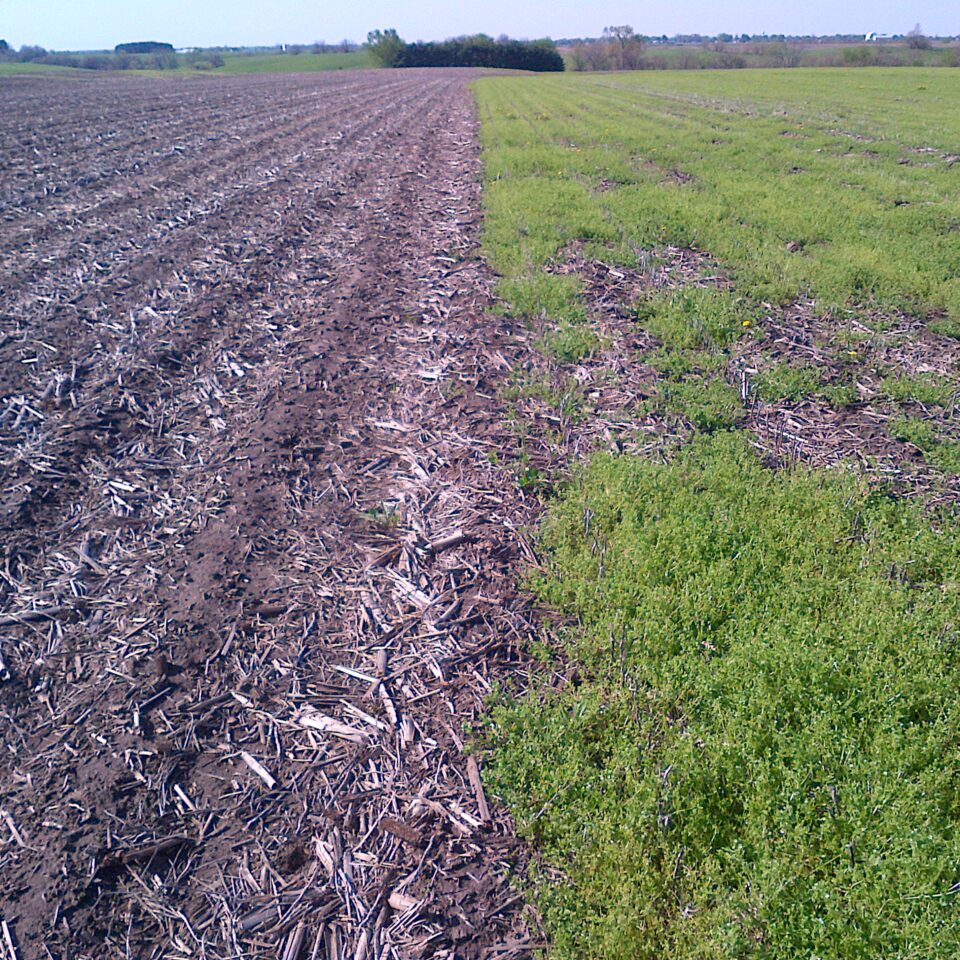
Sometimes it seems as though we are losing the battle to weeds in our fields. Just like everything we do on our farms, though, it is important that we are using the right products at the right rates, right place, and right time. Often, that right time happens to be in the fall after harvest, achieving better weed control at the same cost as a spring application.
- Cleaner spring fields – Controlling winter annuals before they get established means fields are ready to plant as soon as weather conditions permit.
- Reliable weed control – Combining a fall burndown treatment for late-season emerged weeds with a spring residual herbicide application provides weed control through planting.
- Reduce Workload – Reduce hours of spring work by moving a pre-plant spring herbicide pass to after harvest.
- Warmer soils for planting – Reduce the mat of dead weeds that often remains after a spring burndown. That speeds soil warming and dry out, especially in no-till fields.
- Faster crop growth – A warmer, drier seedbed means more uniform emergence and better seedling vigor.
- Less insect pressure – Fewer weeds in the field means insects have less habitat for populations to become established.
“There are plenty of research trials across North America that show if you manage for dandelions, for example, in the fall you’ll get anywhere from 20 to 30 % better control than if you did the same tactic in the spring.”
– Mike Cowbrough, Weed Specialist, OMAFRA.
Post-Harvest Control – Wheat, Soybeans and Corn
Winter Wheat
Applying herbicide after winter wheat comes off is very common and successful. If no cover crop such as red clover is being grown after harvest, a burndown application is essential to keeping the field clean, and preventing weeds from establishing and setting seed. Allowing the field to go fallow and weeds to go to seed creates future weed problems in successive crops. If cover crops are established on the field after harvest, overwintering species such as red clover require control in the fall to prevent any issues with planting the following spring.
Soybeans
An application of a burndown herbicide is often difficult to apply following soybean harvest and before planting winter wheat. With wheat being planted immediately following soybean harvest, the time constraint requires management to work around, but often gives a great advantage to weed control in the spring. If no winter wheat is being planted however, a burndown application can help control late emerging weeds and have the field cleaner going into spring.
Corn
Can be difficult in years where harvest is delayed. If harvest is delayed into December or January, weeds may already be dormant if freezing temperatures are present. In years where harvest has wrapped up earlier, a burndown herbicide in corn can help prevent early flushes of winter annuals next spring.
Herbicide Resistance
Applying multiple modes of effective action at different times of the year can delay the onset and spread of newly resistant weeds, as well as get better control of problem ones that already exist. For example, using a herbicide like BlackHawk® – that contains 2 modes of action (Group 14 and 4) in a tankmix with glyphosate (Group 9), you have 3 modes of action working all at the same time. This tank-mix application can combat glyphosate resistant weeds.
Canada Fleabane
Dealing with Canada Fleabane in the fall is much easier than trying to deal with larger plants in a rosette stage in the spring. It is also important to include non-herbicide control measures in your overall weed control strategy slowing the development of herbicide resistance (ex. cereal rye cover, tillage).
Waterhemp
Also known as “Pigweed on steroids”, Waterhemp is well established in Ontario now, and spreading more every year. Waterhemp populations in the province have resistance of up to four different modes of action (Groups 2, 5, 9 and 14). This member of the pigweed family is an annual weed that has a very long germination window from May to September, producing over a million seeds per plant. Controlling this weed when small (<10 cm) with multiple effective modes of action is crucial to getting ahead of it.
Featured Image: Western Illinois University School of Agriculture
Additional Sources: Top Crop Manager, DuPont